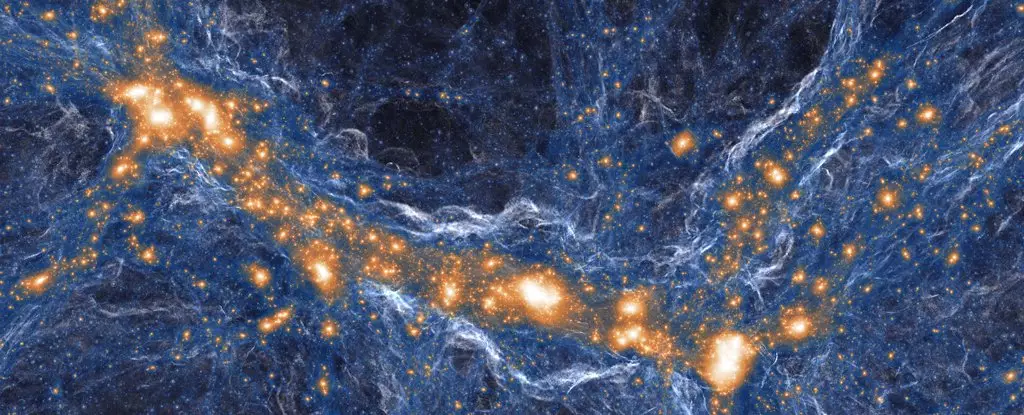The universe is predominantly made up of an elusive component known as dark matter, a term that evokes intrigue and speculation among scientists and enthusiasts alike. While the name suggests a shadowy existence, dark matter’s designation stems from its inability to interact with light. Unlike ordinary matter, which interacts with electromagnetic radiation due to its charged particles, dark matter remains invisible, slipping through our observational tools like a specter. Understanding the true nature of dark matter is not just an endeavor in astrophysics; it poses fundamental questions about the fabric of the universe itself.
At the heart of our comprehension of the universe is the interaction between light and standard (baryonic) matter. Light, as an electromagnetic wave, interacts with charged particles within atoms, resulting in phenomena such as reflection, absorption, and scattering. This interaction allows us to perceive the vast cosmos, from the faint glimmer of stars to the dark profiles of molecular clouds against the scintillating night sky. Dark matter, however, eludes this engagement, lacking electric charge and thereby remaining imperceptible to our eyes and instruments. This unique characteristic confounds researchers as they strive to unravel dark matter’s role and presence in the cosmos.
The Gravitational Connection
Despite being invisible, dark matter undoubtedly exerts a gravitational influence on its surroundings. It plays a pivotal role in cosmic structure formation, aiding in the assembly of galaxies and their clusters. This gravitational interaction, however, raises questions about the depth of the relationship between dark and ordinary matter. Historically, it has been posited that these two forms of matter only engage via gravity, with dark matter not clumping and merging like normal matter. This hypothesis, long held as a foundation in astrophysics, faces new scrutiny as advancements in research challenge its validity.
Recent investigations centering on ultrafaint dwarf galaxies (UFDs) add a new layer to the dark matter narrative. Situated as satellite galaxies of the Milky Way, UFDs appear surprisingly sparse in their stellar populations, a phenomenon attributed to their heavy dark matter composition. A team of researchers conducted simulations to explore the distribution of stars within these dwarf galaxies under two contrasting models: one wherein dark and ordinary matter interact solely through gravity, and another where they exhibit direct interaction.
The findings of these simulations suggested that if dark and regular matter indeed only interact gravitationally, we would expect a concentration of stars in the center of UFDs, tapering off towards the periphery. Conversely, in the model where direct interactions exist, a more uniform distribution of stars would be anticipated. Remarkably, comparison with observational data pointed to the latter scenario being a superior fit, indicating that ordinary and dark matter may share more complex interactions than previously believed.
These revelations have cascading implications for our understanding of dark matter. The potential direct interaction between dark matter and ordinary matter not only challenges established theoretical frameworks but also opens the door to novel methods for detecting dark matter directly. The evolution of our models may shift dramatically as researchers seek to refine their representations of the universe’s hidden players.
Additionally, recognizing that dark and regular matter can interact may illuminate the pathways through which dark matter influences galactic dynamics. The interactions could also provide insights into how galaxies evolve and the formation of cosmic structures. This new perspective on dark matter prompts a re-evaluation of many fundamental assumptions that have guided the field for decades.
Dark matter remains one of the most profound mysteries of modern astrophysics. While historically viewed purely as a gravitational entity, recent studies suggest that its relationship with ordinary matter may be more intricate. As investigations progress and new data emerges, the endeavor to unravel the secrets of dark matter continues. Scientists hope that by peeling back the layers of this enigmatic substance, we may one day grasp a clearer picture of the universe’s composition and the fundamental forces that shape it. The quest for understanding dark matter not only serves to broaden our cosmological horizons but also inspires a sense of wonder about the universe’s hidden truths waiting to be discovered.

